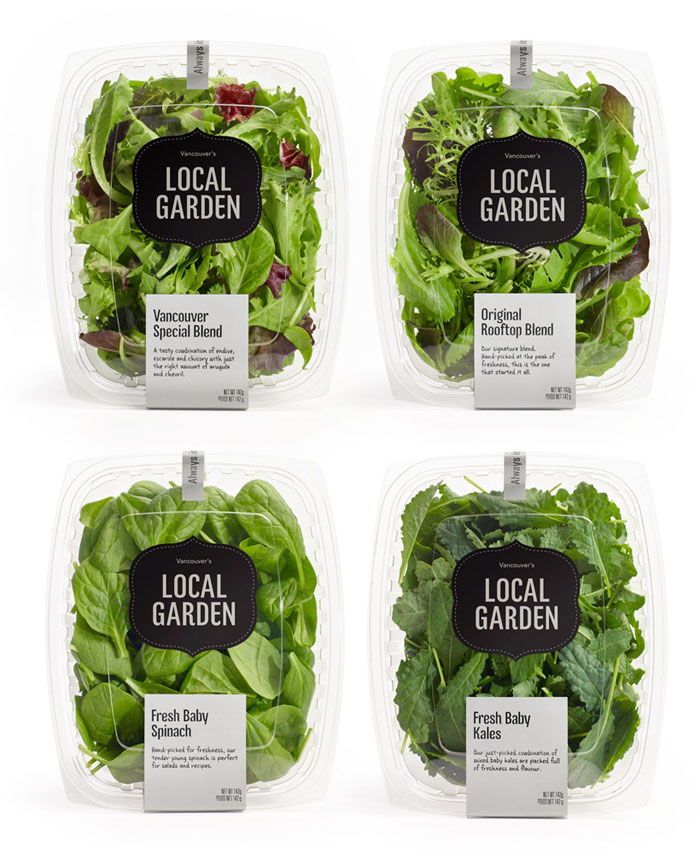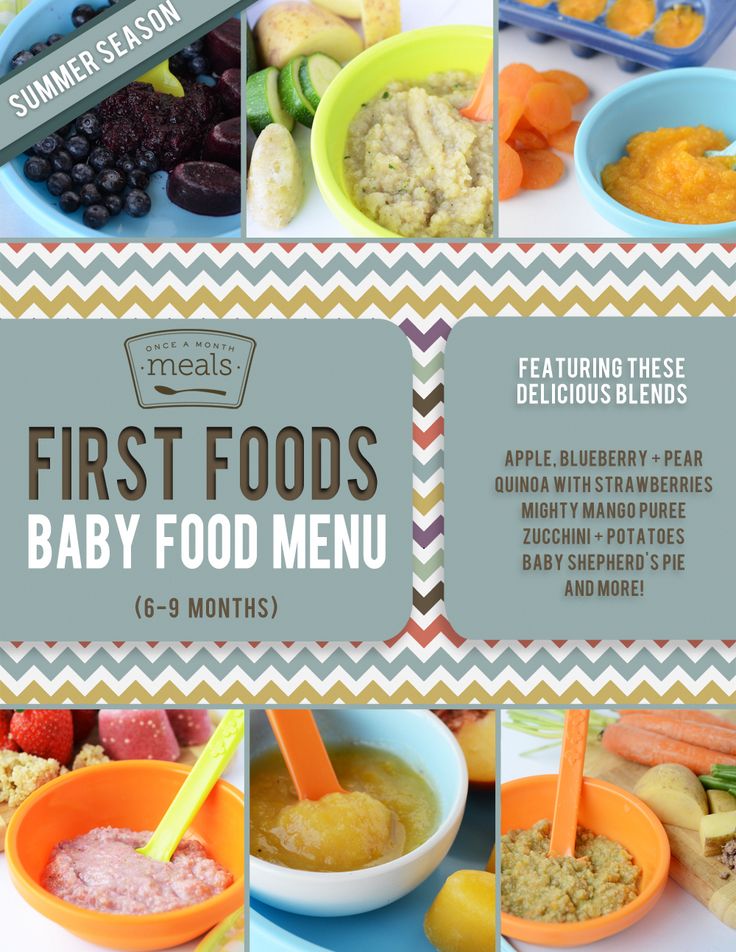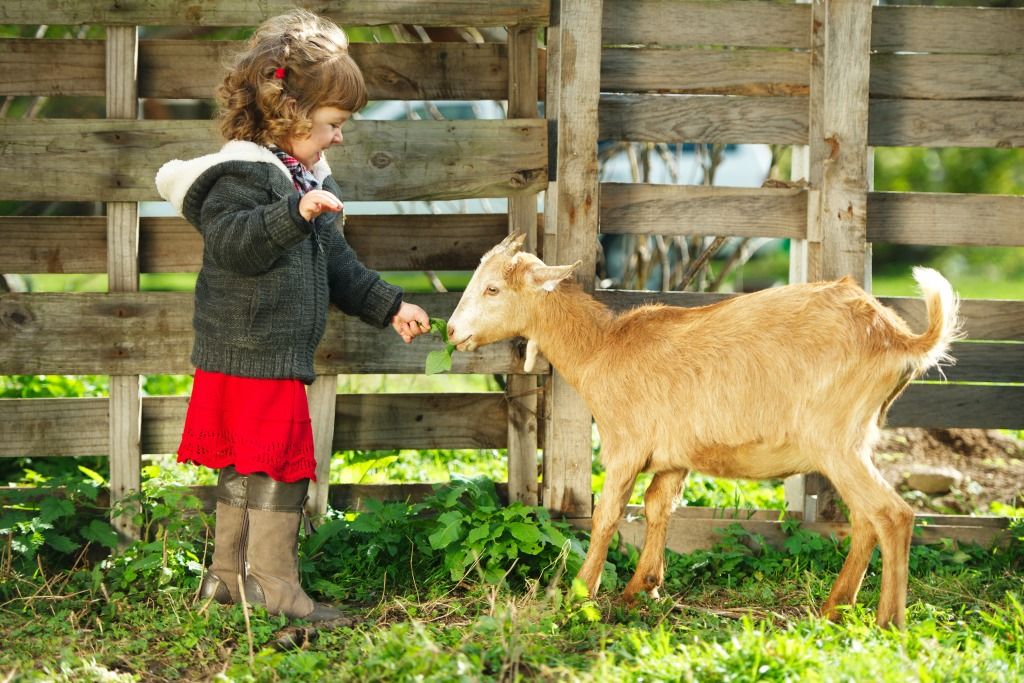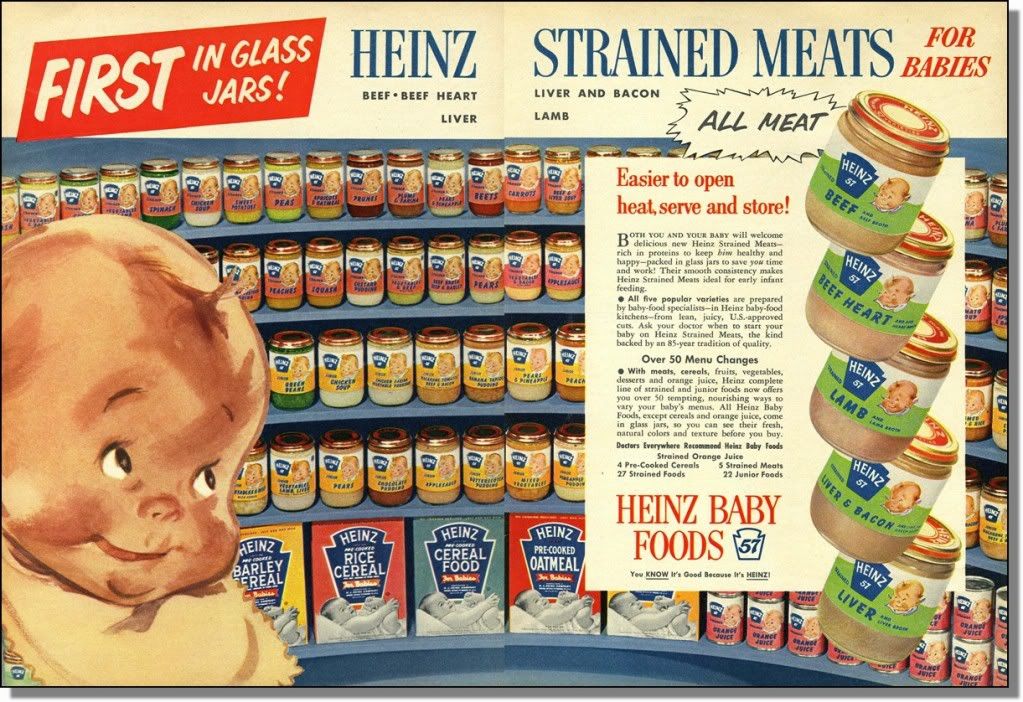Best food for 6 month baby girl
Food For 6-8 Month Old Babies | Introducing Solids
These tips are brought to you by
Signs my baby is ready for solids?What if my baby refuses solid food?What about allergic reactions?Preparing food for babyBe prepared for mess!How to prevent your baby from chokingTop Tips
It is recommended that you start your baby on solids at around six months of age while continuing to breastfeed until twelve months or longer. At this age small amounts of cooled boiled water may also be offered in a cup.
It is recommended that you start your baby on solids at around six months of age while continuing to breastfeed until twelve months or longer. At this age small amounts of cooled boiled water may also be offered in a cup.
Signs my baby is ready for solids?
- From six months of age it is recommended to introduce your baby to solids.
- Your baby should be sitting up straight and have good head, neck and shoulder control by this time.
- Signs of readiness: an increased appetite; your baby is asking for more frequent milk feeds, showing more hand to mouth behaviour, showing interest in food, including the food on your plate.
Some babies will prefer to start with soft foods (mashed or grated) from a spoon and others will prefer to start with soft finger food. There is no set order for the best baby food to be introduced but it is strongly recommended that foods which include iron are included in the healthy diet.
Start with offering mashed foods that are easily digested which may include:
- vegetables (eg pumpkin, potato, sweet potato, taro) fruits (eg cooked pears/apple, ripe banana)
- well cooked rice or iron enriched rice cereal.

- coarsely mashed fruit and vegetables,
- well cooked: minced, stewed or grated meat (cook, freeze then grate)
- fish – bones removed
- legumes (eg lentils)
- pasta and bread (e.g. toast fingers and rusks)
Many babies will only eat a tiny amount to start with (less than ½ teaspoon) while other babies may surprise you by wanting more. Let your baby tell you when they are hungry and full. For example as they get full they don't show as much interest and may look away more. You can find great baby food recipes here.
What if my baby refuses solid food?
Not all babies are ready to start eating solid foods. Remember the food offered during the first couple of months is about helping your baby to learn new tastes, textures and smells. If baby is continuing to refuse food, try offering solids before giving the milk feed, when you are both relaxed and your baby is calm and alert, showing obvious signs of hunger. Eating is a social event and the more times you and or your family eat together the more your baby learns to eat & enjoy what the family is eating.
Eating is a social event and the more times you and or your family eat together the more your baby learns to eat & enjoy what the family is eating.
What about allergic reactions?
If allergy is a problem in your family seek advice from your child and family health nurses or doctor about baby allergies before starting solids.
Preparing food for baby
When preparing foods, food safety is important. Always wash your hands before you begin and ensure the area you are using to prepare the food is clean. You can also use different coloured boards for food types: one each for chopping meats, fruits and vegetables. If you’re using a microwave oven to heat baby’s food, always stir food thoroughly before serving, and check the temperature.
Be prepared for mess!
- Playing with food is your baby’s way of exploring new textures and learning to eat family foods
- To help your baby learn to eat different tastes and textures it is important for your baby to practice by offering a variety of foods in different sizes and texture
- Babies very quickly like to help feed themselves, so give them a spoon to hold from the start
How to prevent your baby from choking
- Always remaining with your baby while they are eating
- Using a safety harness when your baby is in a high chair or low chair to prevent your baby from moving around whilst eating
- Avoiding giving nuts, small hard foods (such as raw or undercooked pieces of hard fruit and vegetables, popcorn, rice cakes and cocktail frankfurts) and small slippery foods (such as whole grapes and whole cherry tomatoes)
TOP TIPS
- Until twelve months cow’s milk should only be used in small amounts to mix with family foods and in cooking
- Avoid nutrient poor foods with high levels of saturated fat, sugar, or salt (e.
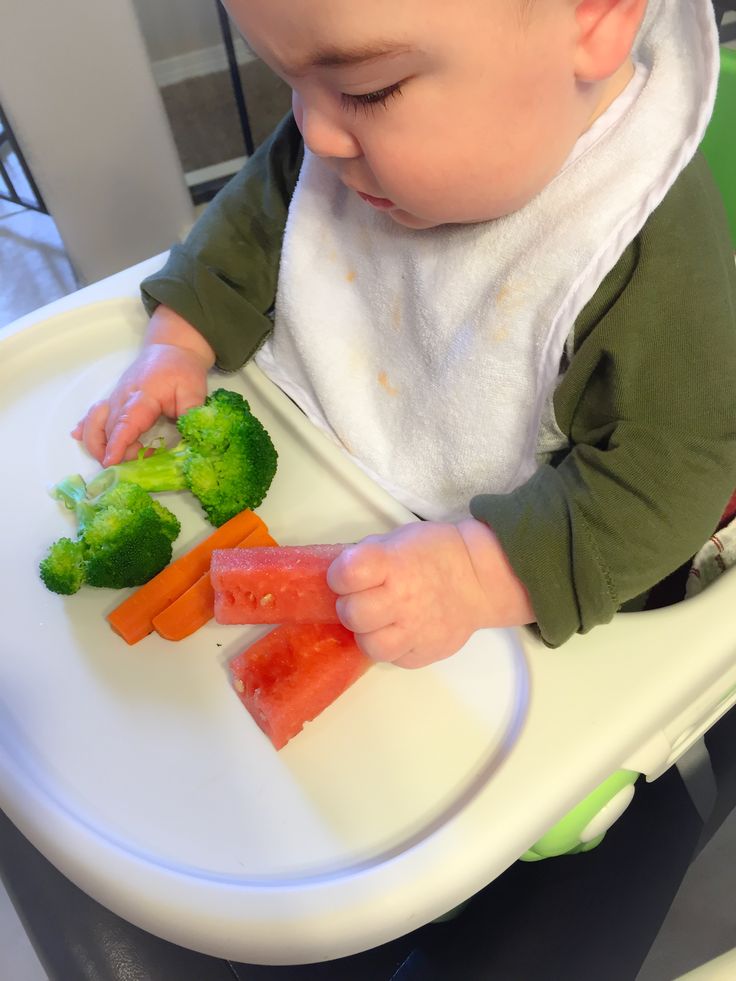 g. cakes, biscuits, confectionery and potato chips).
g. cakes, biscuits, confectionery and potato chips).
- If possible try and feed your baby with the rest of the family. Your baby will soon learn that meal times are not just about food but also about social interaction.
Baby's first foods: The 10 best foods for babies
These 10 first foods are ideal for your baby because they're full of essential nutrients, reasonably priced, easy to prepare, and delicious. Avocados contain healthy fats, while bananas are loaded with potassium. Blueberries are bursting with antioxidants, whereas broccoli offers fiber and folate. Both lentils and meat are packed with protein. Prunes can help with constipation, and yogurt helps form healthy bones and teeth. Sweet potatoes and winter squash are great sources of beta-carotene and vitamin C.
According to the American Academy of Pediatrics, it's important to offer your baby a variety of healthy foods.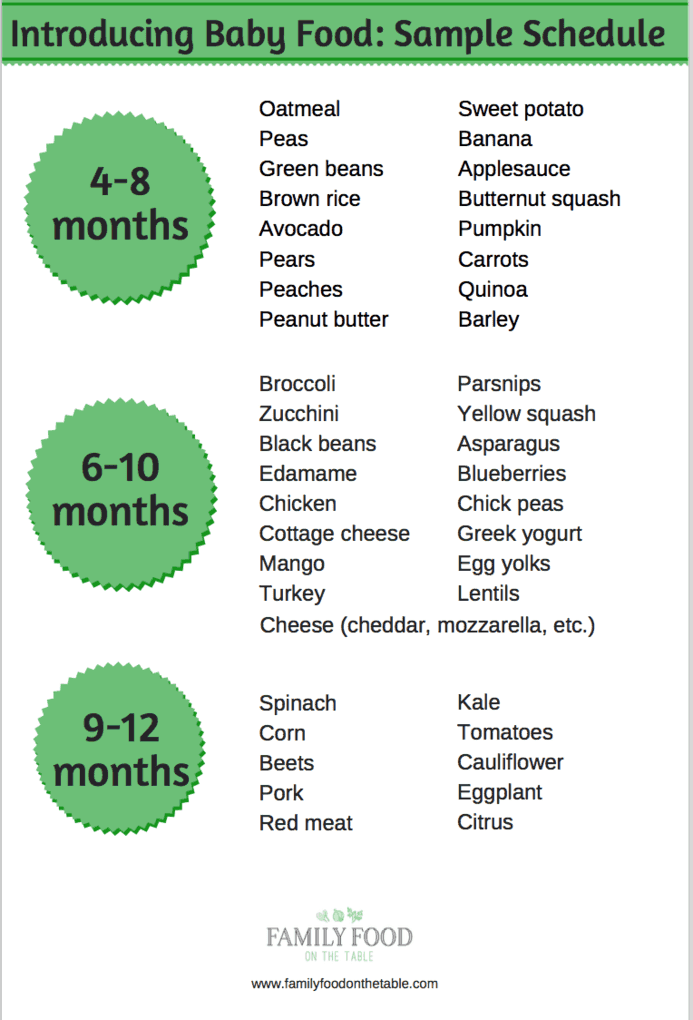 There are lots of healthy, baby-friendly foods out there, but these 10 recommended by doctors and dietitians alike stand out from the pack. From vitamin-rich fruits and veggies to meats and beans loaded with protein, these superfoods are full of essential nutrients, reasonably priced, easy to prepare, and delicious.
There are lots of healthy, baby-friendly foods out there, but these 10 recommended by doctors and dietitians alike stand out from the pack. From vitamin-rich fruits and veggies to meats and beans loaded with protein, these superfoods are full of essential nutrients, reasonably priced, easy to prepare, and delicious.
Many are also favorite first foods. Before introducing solids, talk to the doctor about your baby's readiness for solids, and which foods to introduce and when. Then introduce foods one at a time, waiting at least three days after each new food to watch for any allergic reaction.
Avocados
BabyCenter parents are all about avocado as a first food. This buttery fruit-vegetable is rich in healthy unsaturated fats that help boost brain development. In fact, the fat composition of avocados is somewhat similar to that of breast milk.
Serving ideas: Mash avocado with a fork, or make baby guacamole.
Bananas
Known as a good source of potassium, this grab-and-go fruit also contains vitamins B6 and C, fiber, and magnesium.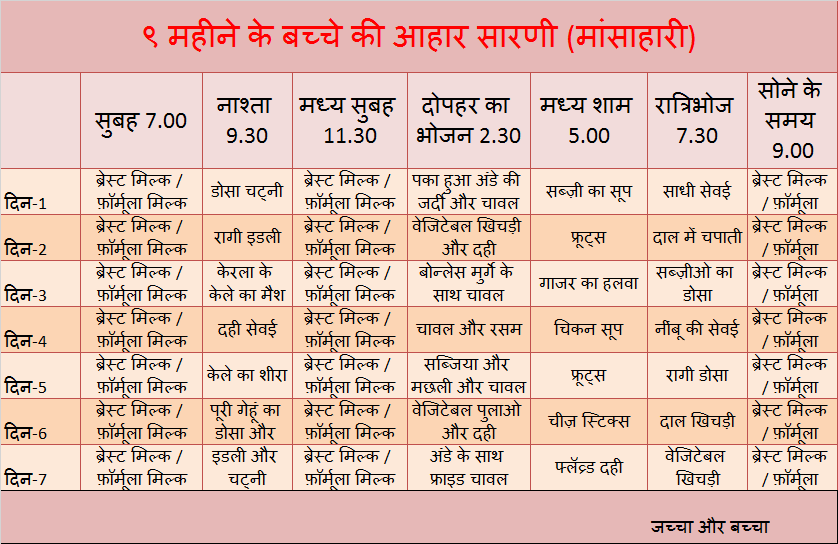
Serving ideas: Make banana and mango puree. Or, for your little one's first smoothie, puree banana and peach chunks with whole-milk yogurt.
Blueberries
Blueberries are bursting with antioxidants. The deep, brilliant blue of these berries comes from flavonoids that benefit your baby's eyes, brain, and even urinary tract.
Serving ideas: Blend or mash blueberries well and swirl a spoonful of the juicy purple puree into yogurt, or top silky coconut milk rice pudding with blueberry compote.
Broccoli
This cruciferous vegetable is a rich source of essential nutrients, including fiber, folate, and calcium. Introduce your baby to broccoli's bold flavor early, and you'll be expanding their tastes and encouraging a lifelong love of green vegetables.
Advertisement | page continues below
Serving idea: Steam until soft, cut into pieces small enough for your child to eat safely, and then chill. Steaming takes the bite out of broccoli, and some babies prefer the texture and taste when it's cold.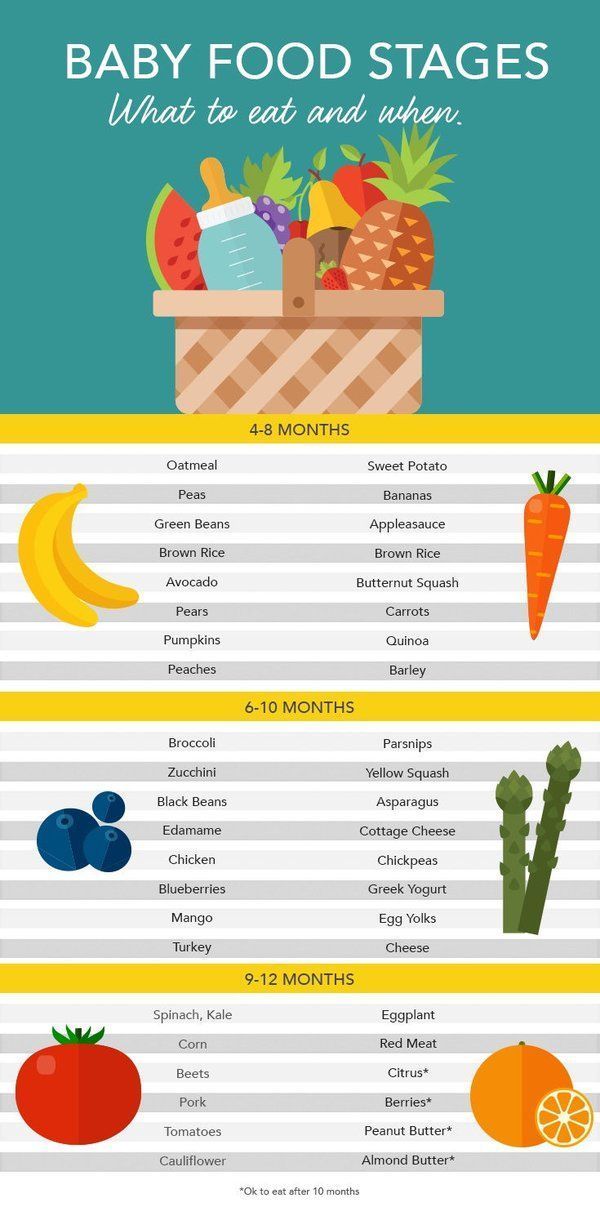
Lentils
Beans and other legumes pack lots of lean protein and fiber. But unlike larger beans, little lentils simmer into a pleasing mush just right for baby bites. They're also one of the cheapest healthy foods you can buy.
Serving ideas: Cook finely diced carrots along with the lentils. As your baby gets older, double up on nutrient-rich foods by making lentil and spinach stew.
Meat
Lack of iron can cause anemia. The American Academy of Pediatrics recommends meat as a first food because it's such a great source of protein, zinc, and iron, especially red meat and dark poultry meat. Plus, babies absorb iron more easily from meat than from iron-fortified cereals, another common first food.
Serving ideas: If your baby is new to solids, try our easy turkey or chicken puree recipe. As they get older, introduce new flavors with chicken curry with green beans and zucchini or shepherd's pie.
Prunes
Whether you call them "prunes" or "dried plums," these humble fruits don't sound glamorous – but they're soft, sweet, and full of fiber. Your baby may suffer from constipation when switching to solids, as it's a big change for their system. Add pureed prunes to your baby's diet to aid digestion and keep things moving.
Your baby may suffer from constipation when switching to solids, as it's a big change for their system. Add pureed prunes to your baby's diet to aid digestion and keep things moving.
Serving ideas: Serve pureed prunes alone or mixed with other foods, such as oatmeal, cereal, or applesauce, for a naturally sweet treat.
Sweet potatoes
Sweet potatoes are one of the more popular first foods for babies, who tend to like both their sweetness and texture. These colorful root vegetables are packed with beta-carotene, vitamin C, and minerals, including iron and copper.
Serving ideas: Serve sweet potato puree alone or swirled into pureed chicken or turkey.
Winter squash
Orange- or yellow-fleshed hard winter squashes such as butternut, acorn, and pumpkin boast many benefits, one of which is they're exceptionally rich in beta-carotene, recognized for being great for eyes. Squash is also an excellent source of vitamin C. Natural sweetness and a creamy texture add to the appeal of winter varieties.
Serving ideas: Roast a winter squash like butternut, scoop out the flesh, and puree it for an easy first food. As your baby gets older, introduce new flavors and textures with dishes like smashed chickpea and butternut chili.
Yogurt
Creamy yogurt is rich in calcium and vitamin D, necessary for healthy bones and teeth. Your baby can have it at 4 to 6 months, long before they'll be ready for cow's milk.
Opt for plain yogurt with no added sugar. Also look for a brand with the most live cultures, which help regulate the good bacteria in your baby's digestive tract. Make sure you pick up whole-milk yogurt – babies need the calories from fat.
Serving ideas: Yogurt is fine on its own, or swirl in pureed berries or other fresh fruit, applesauce, or mashed avocado.
Was this article helpful?
Yes
No
diet for a 6-month-old baby with breast and artificial feeding, an approximate menu for a week in the table, a diet for a day
Published: 02/10/2021
Reading time: 4 min.
Number of reads: 204932
Author of the article: Ponomareva Yuliya Vladimirovna
Pediatrician, Candidate of Medical Sciences, Allergist-Immunologist
Changes in a child in the first year of life are very rapid, and each month is not like another. The 6-month milestone is very important, it is largely evaluative and transitional. By this age, most babies have doubled their birth weight, are about 15 cm tall, and some babies have already erupted their teeth. The age of 6 months is also transitional in terms of nutrition. Breast milk or an adapted formula is still the basis of the diet, but with the beginning of the second half of life, all children, without exception, should begin to receive complementary foods. Despite the general graph of growth and weight gain and indicators of psychomotor development, the status and diet of children at 6 months can be very different. nine0003
Content: Hide
- The first feeding of 6 months
- The start of complementary foods at 4-5 months
- The second half of the life
- for a week for a child at 6 months
The first feeding of
If the baby is healthy and breastfed, and his mother eats a full and varied diet, exclusive breastfeeding is possible until this age. Cereal complementary foods in this case are preferable to start. This is due to the high energy and nutritional value of cereals, the ability to significantly enrich the baby's diet with a delayed start of the introduction of complementary foods. nine0003
Cereal complementary foods in this case are preferable to start. This is due to the high energy and nutritional value of cereals, the ability to significantly enrich the baby's diet with a delayed start of the introduction of complementary foods. nine0003
However, the rate of expansion of the child's diet in this situation will be accelerated. Before the 8th month of life, it is necessary to introduce all basic food groups into the baby’s menu, since in the second half of the year the need for additional intake of nutrients and micronutrients is very high. Another reason explaining the importance of the rapid introduction of complementary foods is the formation of immunity of the immune cells of the intestine to ordinary food. If a child is introduced to these foods at the age of 4-8 months, the risk of developing food allergies has been proven to be reduced. nine0003
Complementary feeding starts at 4-5 months
In today's life, the nutrition of a nursing mother, unfortunately, is not always complete. Therefore, for most breastfed babies, complementary foods already need to be introduced from 5 months in order to prevent deficient conditions.
Therefore, for most breastfed babies, complementary foods already need to be introduced from 5 months in order to prevent deficient conditions.
If a child is bottle-fed, then by the 4th month of life, the baby will not have enough adapted formula alone, and in this group of children, the timing of the introduction of complementary foods usually shifts a month earlier than in breast-fed babies. Accordingly, by 6 months, children will have vegetable puree and gluten-free porridge (buckwheat, corn and rice) in their diet. In the first half of life, monocomponent meals are used (that is, from one type of grain and vegetables), prepared on the basis of water, breast milk or an adapted mixture. nine0003
Fruit puree and juice can be another possible complementary food for children under 6 months of age without allergy symptoms. In a child with a risk of developing or manifesting allergies, the timing of the introduction of fruit complementary foods is shifted to the 8th month.
Second six months of life
Children over 6 months of age can supplement their diet with cereals containing gluten. First of all, these are oatmeal and wheat porridge, and then multi-cereal dishes with the addition of other cereals (millet, barley, rye). If the child does not have any manifestations of allergies, milk porridge can be included in the menu at this age. Bebi Premium industrial baby food products include specially prepared milk that is safe to use in healthy babies in the first year of life. nine0003
First of all, these are oatmeal and wheat porridge, and then multi-cereal dishes with the addition of other cereals (millet, barley, rye). If the child does not have any manifestations of allergies, milk porridge can be included in the menu at this age. Bebi Premium industrial baby food products include specially prepared milk that is safe to use in healthy babies in the first year of life. nine0003
From the age of 6 months, the baby's diet is expanded with such important products as meat and cottage cheese. These products are a source of high-quality protein, fats, and are also rich in minerals such as iron, calcium, and phosphorus. Pediatricians and nutritionists recommend introducing meat and cottage cheese as part of combined dishes based on a fruit and vegetable and / or grain component in a ratio of 1 (cottage cheese / meat): 4–5 (fruits / vegetables / cereals).
To enrich the diet with polyunsaturated fatty acids in the second half of the year, the menu includes vegetable oil in the amount of 3–5 grams per day, which can be added to the complementary food dish.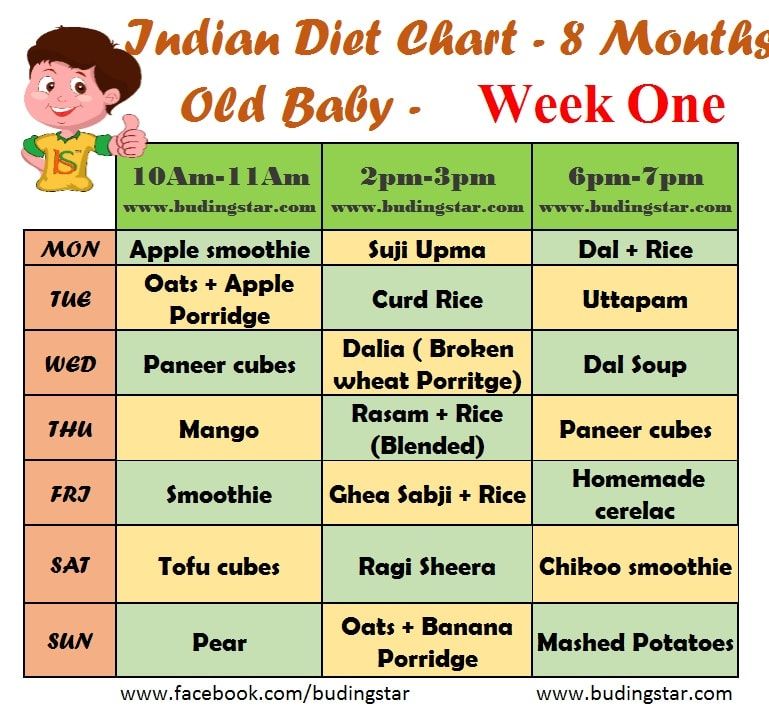 The volume of each feeding is approximately 150-170 ml, and the child can already stand up to 3.5 hours between meals. nine0003
The volume of each feeding is approximately 150-170 ml, and the child can already stand up to 3.5 hours between meals. nine0003
In the table below, we offer a menu of 6 months for a week for a child who started receiving complementary foods at the age of 4-5 months, and by the time the second half of life begins, dairy-free gluten-free cereals, vegetable and fruit purees have already been introduced into his diet.
1st day
| Seeing | 0065 50|||
| Lunch (12.30) | vegetable soup with beef, olive oil | 100/30/3 | compot of drocked 9006, 9006 9 |
| Afternoon snack (16.00) | Plum puree with cottage cheese | 60/40 | |
| Breast milk/formula | 60 062 | ||
| food reception | menu | ml/g | |
| Early morning | breast milk/mixture | 150 | Milki | & Bashas Breakfast (09 cherry Bebi Premium» | 100 |
| 0065 Breast milk/mixture | 150 | ||
| children's soluble cookies "BEBIKI" Classic | |||
| GRUSHERS with rice and Claus | GRUSHIOUS WITH RISE and CRETURE 30 | ||
| Bebi Premium Kids Instant Herbal Tea | 50 | ||
| Bedtime 065 Breast milk/formula | 150 | ||
Rate the article
(Number of votes: 20, average 4. 8)
8)
Share with friends:
Child's daily routine, nutrition, development at 6 months
04/19/2019
33
Approximate daily routine of a child
6 months
The daily routine of a 6 month old child is becoming more and more stable:
- A schedule is formed with predictable periods of daytime sleep.
Some babies are comfortable with two naps during the day, others sleep three times a day until 8-9 months.
It is worth paying attention to the duration of daytime sleep - morning and afternoon sleep should be at least 1-1.5 hours long so that the child's body has a good rest. The third dream may remain short, it is better to start it between 15.00-16.00. Make sure that it does not end too late, otherwise the time for evening bedtime will shift. Morning and afternoon naps are recommended to be done at home, the third nap can be spent outside in a stroller.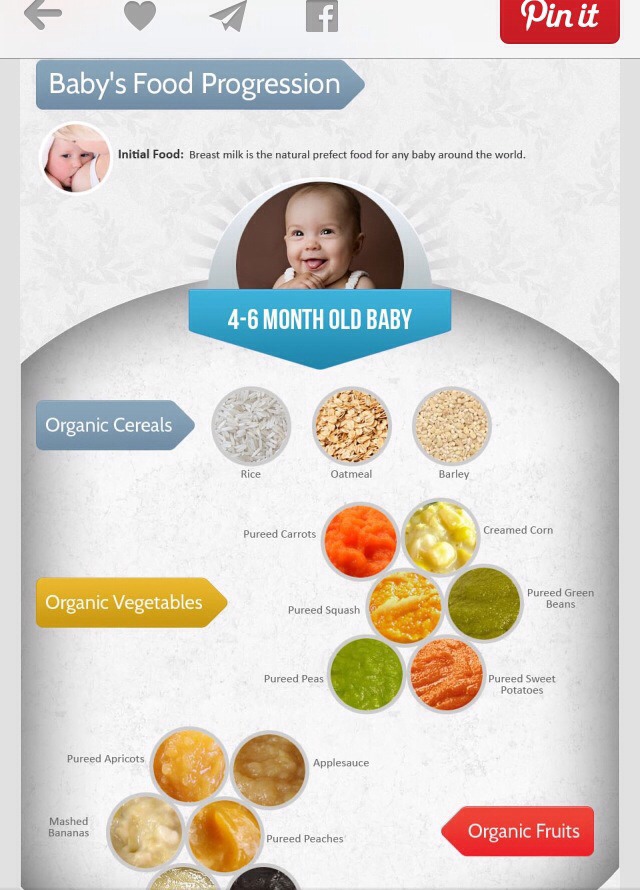 nine0003
nine0003
When going to bed early, the best time to wake up in the morning is 06.30-07.00.
- Regular bedtime appears
A six-month-old baby is already physiologically ready for early bedtime. The optimal time for leaving at night will be between 18.00-20.00. You will have a clear bedtime ritual that will help the child relax and make the process of bedtime easier. The ritual must be repeated daily. It takes 20-30 minutes to complete it. nine0003
- The period of wakefulness of the child increases
Now, when forming the daily routine, one should focus primarily on the recommended waking time - in six months it increases to 2.5 hours with an established regimen with three daytime sleeps. Signs of fatigue in a child are already harder to notice, so you can miss the moment when the baby is ready for bed.
Total amount of sleep
Now the child needs to sleep 13-14 hours a day.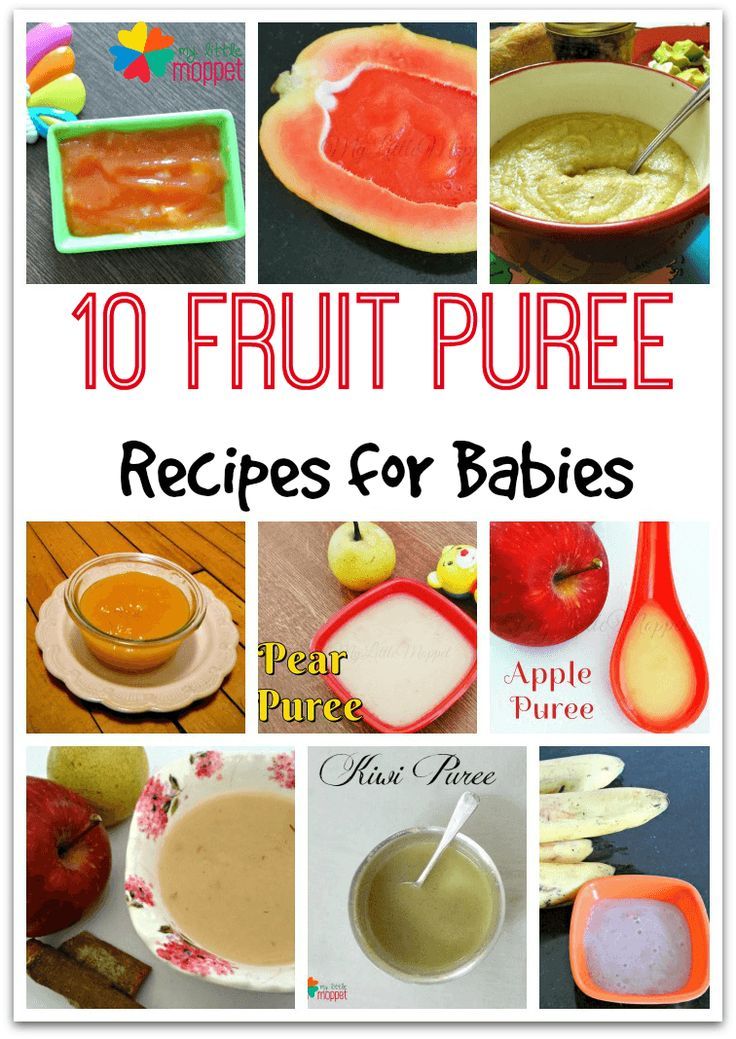 Night sleep is 11-12 hours with awakenings for 2-3 feedings while breastfeeding. The number of night awakenings in formula-fed babies will be less. The total duration of daytime sleep at this age is about 2.5-4 hours. nine0003
Night sleep is 11-12 hours with awakenings for 2-3 feedings while breastfeeding. The number of night awakenings in formula-fed babies will be less. The total duration of daytime sleep at this age is about 2.5-4 hours. nine0003
Monitor your baby and follow the main recommendations of the table to understand how many hours of sleep he needs and build the right daily routine that will suit your six-month-old baby.
A table on the sleep and wakefulness of a child at 6 months will help you with this:
You can adjust the regime and adapt it as your baby grows in the Club MODE FROM A TO Z - read more.
What affects baby's sleep:
1. By 6 months, your baby has already learned to roll over from back to stomach and back. Now he is gradually mastering new skills: he learns to pull himself up at the support, get on all fours, sit on his own and actively prepare for crawling. The baby can continue to practice new skills both during the day and in the crib during sleep.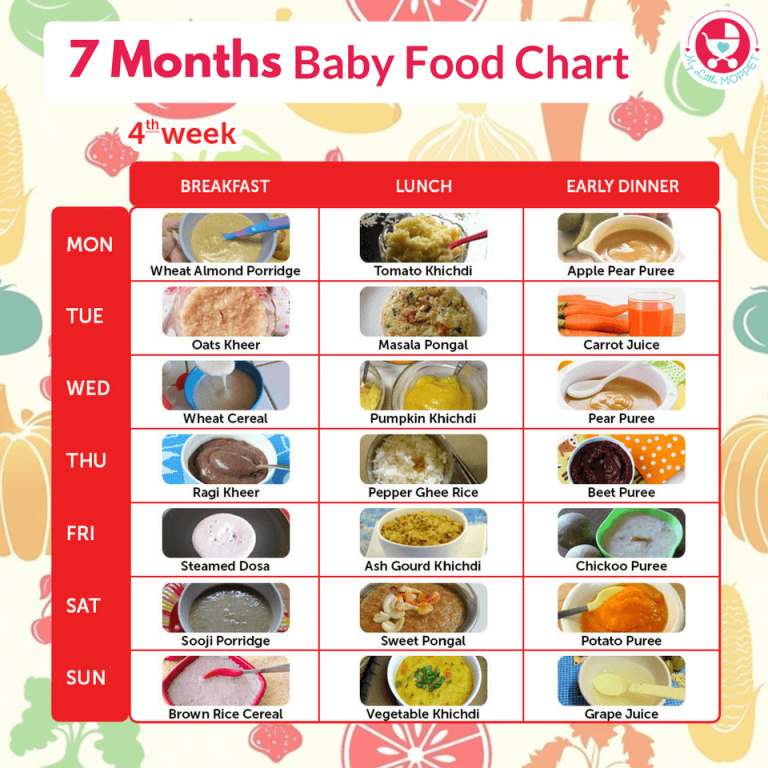 At such moments, he often wakes up and sleeps restlessly. This is part of the natural development of the child. nine0003
At such moments, he often wakes up and sleeps restlessly. This is part of the natural development of the child. nine0003
To help him get used to the new possibilities of his body, practice new skills while you are awake. Show how you can lie back down from a sitting position. And if before the child did not mind spending a lot of time in the stroller, now he needs time and space for active play during wakefulness. After 7-14 days, the child’s sleep will improve.
2. Skipping naps and going to bed too late at this age can lead to overtiredness, protests before bed and frequent nighttime awakenings. To prevent this from happening, try to follow a clear daily routine. nine0003
3. At six months, the baby may show the first signs of separation anxiety. Having become more independent, he realizes that he is not one with her. And the baby develops fear and anxiety that the mother will leave and will not return. If you find your baby won't let go of you during bedtime, extend the ritual to include carrying, massages, hugs, and kisses.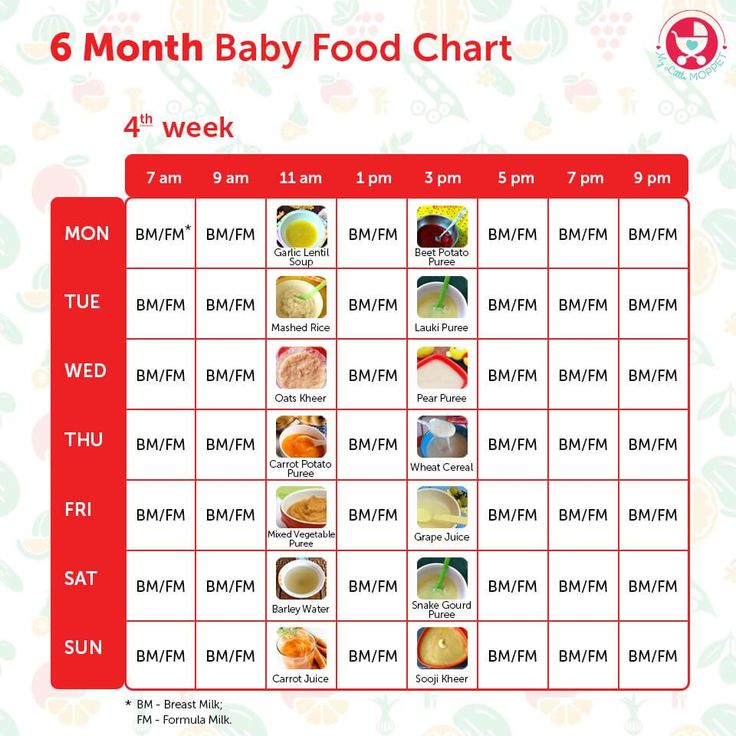 Offer your child a sleep toy that smells like you and "guards" their sleep. It is also worth spending more time with the child one on one, without being distracted by other things. nine0003
Offer your child a sleep toy that smells like you and "guards" their sleep. It is also worth spending more time with the child one on one, without being distracted by other things. nine0003
4. Teething is another factor that affects the sleep of children of this age. In the acute period, help the baby in every possible way, use teething toys and anesthetic gel as recommended by your pediatrician. As soon as the acute period passes, return to the previous sleep conditions and daily routine.
Watch the free workshop MY BABY SLEEPING BADLY AT NIGHT: 3 SOLUTIONS if your child is having trouble sleeping at night.
Child's diet
6 months
Breast milk and infant formula are still the baby's main complete food, from which he receives important nutrients.
But at 5-6 months you will notice that he has begun to show interest in adult food - watching you eat, following the spoon with his eyes, opening his mouth and smacking his lips. At six months, it is important to maintain this food interest in him, gradually expanding the child's nutrition. For this purpose, complementary foods are introduced. It is from the age of six months that WHO recommends including adult food in the diet of a breastfed child. nine0003
At six months, it is important to maintain this food interest in him, gradually expanding the child's nutrition. For this purpose, complementary foods are introduced. It is from the age of six months that WHO recommends including adult food in the diet of a breastfed child. nine0003
Complementary foods can be started with vegetable puree. Choose zucchini, cauliflower, broccoli. Then gluten-free cereals are introduced. If the child is not gaining weight, then complementary foods usually begin with cereals.
Water is also added to the diet from 6 months. But modern pediatricians do not recommend giving juices to a child in the first year of life.
The volume of complementary foods is small - in the first days, half a teaspoon of puree is enough for a baby, then the serving volume gradually increases over 10 days to the required norm. Feed one food and see how your baby reacts. The best feeding time is the first half of the day.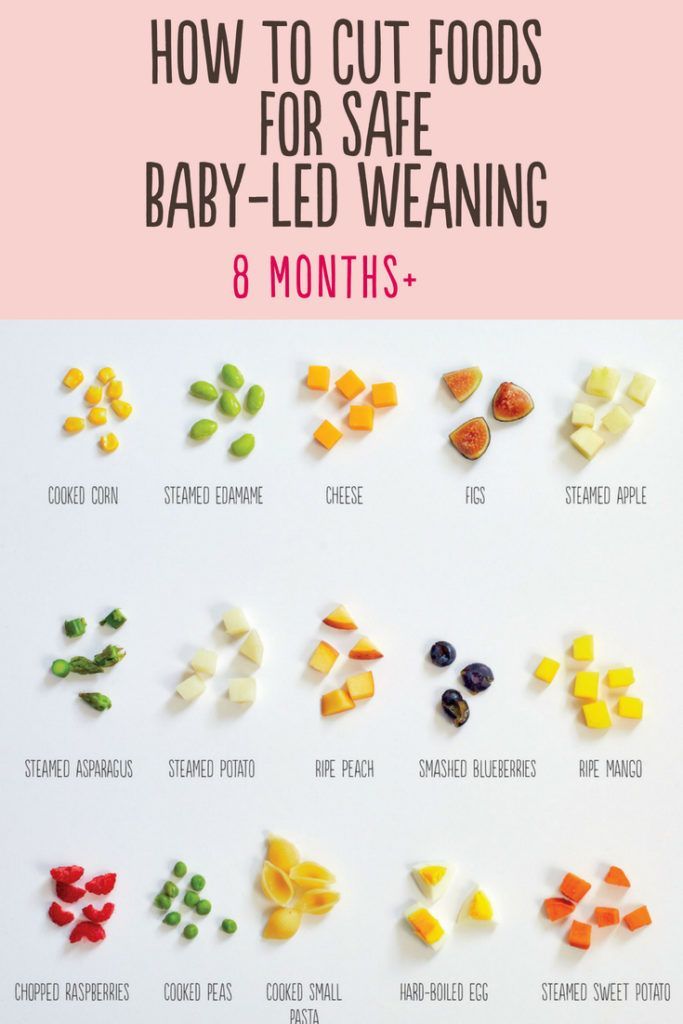 nine0003
nine0003
By the age of 6 months, the feeding regimen is formed. The child eats on awakening and shortly before bedtime up to 5-6 times a day. Attachments to the breast are short, as the child is often distracted during feeding. The most frequent feedings are in the evening and active sucking is shifted to the last 2-3 hours before waking up.
The amount and frequency of feedings should be discussed with the pediatrician.
Development of the child
Thinking
The baby now distinguishes well between friends and strangers and can show his displeasure, being left without a mother. nine0003
Be prepared that the child will not want to let you go if you want to leave him with his grandparents.⠀
Communication
The kid is already turning around at his name, listening to the voice of an adult and pronouncing syllables in response to your voice.


